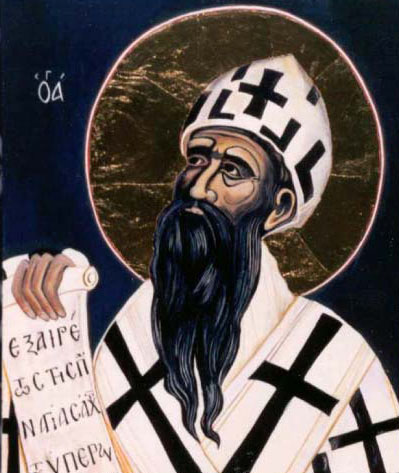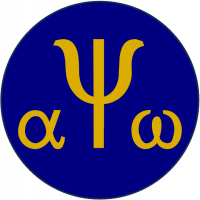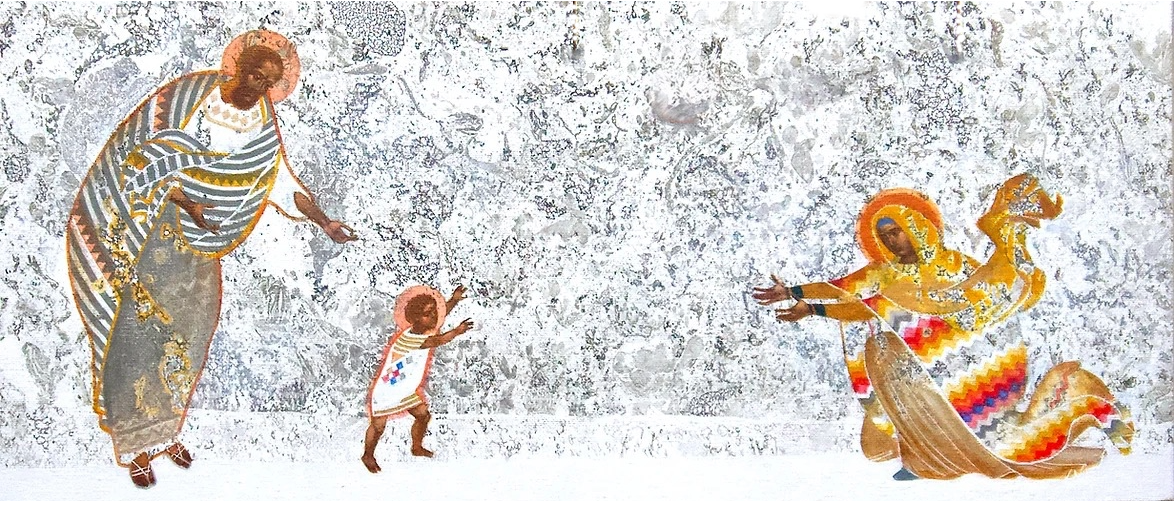
Cyril of Alexandria
The young St Cyril (c. 378-444 AD) enjoyed the patronage of his uncle Theophilus (archbishop of the powerful see of Alexandria) and received an excellent education in this important ancient cultural and intellectual centre. On his uncle’s death, Cyril succeeded him as archbishop, becoming embroiled from the start in tensions between the Christian and Jewish/pagan factions in the city.
Other tensions were to mark his career, specifically the bitter debate with the archbishop of Constantinople (Nestorius) over Christology (the “God-man” makeup of the person of Christ). This crisis came to a head at the Council of Ephesus (431 AD) at which Cyril appointed himself both judge & jury. Rather unsurprisingly, the council saw Cyril’s christological perspective triumph against an alternative view put forward by Nestorius.
However, this was far from the end of the matter, and Cyril’s views continued to provide a focus at the Council of Chalcedon (451 AD). The results of this council caused divisions in the Eastern Church which persist to the present day.
Quotes from Cyril of Alexandria
I’ve compiled some of my favourite quotes from Cyril of Alexandria on some of his common themes. Click the links to read more…
Cyril of Alexandria’s Texts in Translation
You can’t escape reading source documents in order to understand Early Church debates from the perspective of the people involved in them at the time. The books below provide a good place to start with respect to hearing Cyril in his own words.
J.A. McGuckin (translator), On the Unity of Christ (New York: St Vladimir’s Seminary Press, 1995)
If you want a single (small) book containing Cyril’s perspective on the person of Christ (strongly contrasted with Nestorius’ position) this is it. The text takes the form of a dialogue between two friends with Cyril pulling the strings and putting words in the mouths of both participants, to show the folly of the Nestorian position! There’s also a (sizeable) introduction to the controversy as well as to Cyril himself. This is another in the (always excellent) “Popular Patristics” series published by St Vladimir’s Seminary Press.
N. Russell, Cyril of Alexandria (London: Routledge, 2000)
Russell’s book contains some good-sized chunks of English translations from Cyril’s texts which were not directly connected with the Nestorian controversy (e.g. his commentaries on Isaiah and John’s Gospel) – yes, Cyril did write on other topics too! Russell’s book therefore enables you to get a feel for Cyril as an exegete, rather than just a rabid Nestorian-basher. There’s also a very useful introduction into Cyril’s life and background – recommended.
J. Stevenson (editor), Creeds, Councils and Controversies: Documents Illustrating the History of the Church, AD 337-461 (London: SPCK, 1989)
This book is the standard collection of (English translations of) Early Church source documents for this period. With regard to Cyril’s writings, you’ll find Cyril’s 2nd letter to Nestorius and Cyril’s 3rd letter to Nestorius (including the “Twelve Anathemas”).
In addition there is much other interesting correspondence on the same topic (e.g. Nestorius’ reply to Cyril’s 2nd letter, Cyril’s defence of his acceptance of the Formula of Reunion). You’ll also find source documents concerning the important council of Chalcedon including the Chalcedonian Definition of the Faith (i.e. the Creed produced at Chalcedon).
The Christological Controversy
To understand Cyril, it’s important to place him in the context of the fifth century Christological controversy. The following books are listed in increasing order of difficulty/ depth/ nerdy interest. Stop reading when you’ve had enough!
H. Chadwick, The Penguin History of the Church: The Early Church (London: Penguin Books, 1993)
As always, if you’re new to the field of Early Church study, Chadwick’s paperback book is a good place to start. It manages to whiz through the people and events of the fifth century Christological controversy in a mere, but rather dense, 20 pages.
J.N.D. Kelly, Early Christian Doctrines (London: Continuum, 1977 – 5th Edition)
If you want to go a bit deeper, it’s time to pick up Kelly’s standard Early Church textbook which covers the controversy in Chapter 12 “The Christological Settlement”. However, it’s worth reading Chapter 11 too (“Fourth-Century Christology”) which provides the background to the debate and a sketch of the different Christological positions (Alexandrian & Antiochene) which are characteristically represented as starting from different perspectives and coming to blows in the 5th century.
F. Young, From Nicaea to Chalcedon: A Guide to the Literature and Its Background (London: SCM Press, 2010)
If you’ve read the relevant chapters in Chadwick and Kelly’s books, an ideal next step is either this one by Young or McGuckin’s book (see below). Chapter 5 of Young’s book presents a more in depth sketch of some of the main figures in the debate (Eustathius, Apollinaris, Diodore, Theodore of Mopsuestia, Nestorius, Cyril and Theodoret of Cyrrhus). This is an ideal accompaniment to Kelly’s textbook.
J.A. McGuckin, Saint Cyril of Alexandria and the Christological Controversy (New York: St Vladimir’s Seminary Press, 2004)
If you’ve followed the events and arguments outlined in Kelly and/or Young’s books (above), McGuckin’s book is a superb follow-on. Quite simply this is the single best book to get on the fifth century controversy.
This scholarly work presents an excellent and balanced perspective on the controversy from both sides (from Nestorius’ side as well as Cyril’s), showing the objections of each side to the Christology of the other. In particular, McGuckin presents a more sympathetic portrayal of Cyril and his motives than the traditional thumbnail sketch of Cyril as a scheming & sneaky ecclesiastical politician which is usually given.
As always with McGuckin’s work, it’s very readable & accessible for the non-specialist to a large extent. It does get into quite some technical detail about the precise meaning of certain Greek words used in the debate and their exact meaning, but you don’t have to wrestle with this aspect if you don’t want to. This is the standard advanced undergraduate/ post-graduate text book on the topic. But don’t let that put you off!
Besides Cyril’s important 2nd and 3rd letters, McGuckin also usefully provides translations of some of Cyril’s other works which are well worth reading – these include his Letter to the Monks of Egypt, the Explanation of the Twelve Chapters (Anathemas) and the Scholia on the Incarnation of the Only Begotten.
T.G. Weinandy & D.A. Keating (editors), The Theology of St Cyril of Alexandria: A Critical Appreciation (London: T&T Clark, 2003)
In the past, because of his role in the Christological Controversy, Cyril has been studied almost exclusively for this aspect of his thought. This book, however, contains a welcome collection of essays by a number of excellent scholars which examine other aspects of Cyril’s theology. The link takes you to a search on Abebooks.co.uk where a handful of copies are available starting at a “mere” £150! Probably better off visiting your library.
Does God Suffer?
In contemporary Christian piety, and theology, the concept of a suffering God is taken as a given. In the context of the Early Church, however, it was simply inconceivable for God to suffer. Both sides in the fifth century Christological Controversy were adamant that Christ is God, yet neither side would have allowed that God can suffer. This clearly raises the problem of how they understood the suffering of Christ!
Nestorius’ approach was to attribute the suffering to (effectively solely) the humanity of Christ, whereas in Cyril’s model it was the very flesh of Christ-God which suffered (although God did not himself suffer “nakedly”).
If you’re intrigued by the Early Church’s adherence to the concept of an unsuffering God (and want an explanation of the thinking behind this position) I’d suggest three resources to start you off:
- An excellent article “Does God Suffer?” by Thomas Weinandy published in Ars Disputandi Volume 2 (2002).
- The above article is a summary of the arguments in Weinandy’s book – also called “Does God Suffer?“.
- I’d also recommend P. Gavrilyuk, The Suffering of the Impassible God: The Dialectics of Patristic Thought (Oxford: Oxford University Press, 2006)

